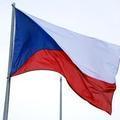1918–1938: A democratic republic. 1938–1939: After annexation of the Sudetenland by Germany in 1938, the region gradually turned into a state with loosened connections between Czech, Slovak, and Ruthenian parts. A large strip of southern Slovakia and Ruthenia was annexed by Hungary, and the Zaolzie region was annexed by Poland. 1939–1945: The region split into the Protectorate of Bohemia and Moravia and the Slovak Republic. A government-in-exile continued to exist in London, supported by the United Kingdom, United States and its Allies; after the German invasion of Russia, it was also recognised by the USSR. Czechoslovakia was part of the Declaration by United Nations and was a founding member of United Nations. 1946–1948: The country was governed by a coalition government with Communist ministers, including the prime minister and the minister of the interior. Carpathian Ruthenia was ceded to the USSR. 1948–1989: The country became a communist state with a centrally planned economy. In 1960, the country officially became a socialist republic. 1969–1990: The federal republic consisted of the Czech Socialist Republic and the Slovak Socialist Republic. 1990–1992: The federal democratic republic consisted of the Czech Republic and the Slovak Republic.

Czech Republic, Czechoslovakia, Czechoslovakia - Form of state
To hear audio for this text, and to learn the vocabulary sign up for a free LingQ account.
